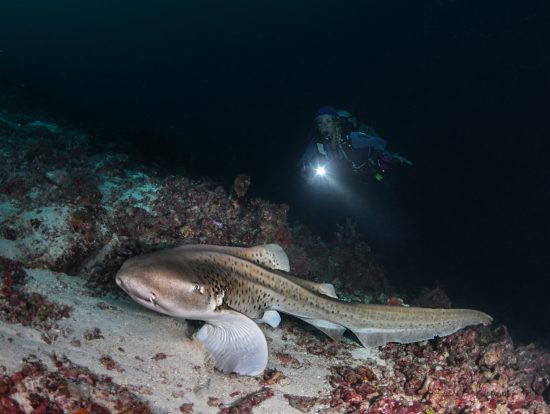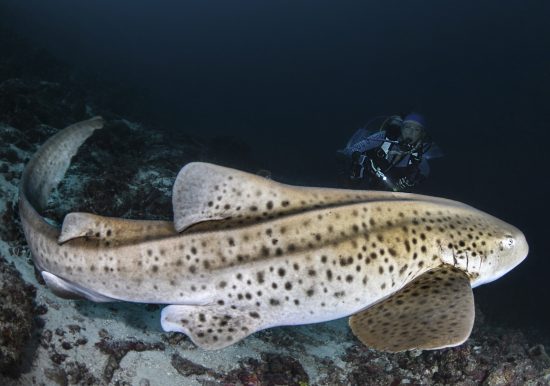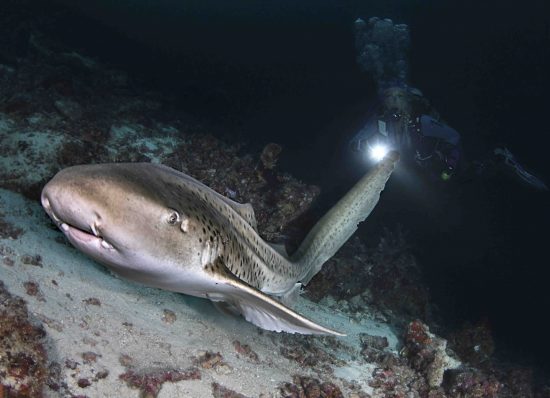




Leopard sharks are one of the most common sharks in the Eastern North Pacific. Their scientific name, Triakis semifasciata, means “half banded”, which matches their description. They have very characteristic dark bars or saddles on their dorsal surface. They are silvery to bronze in colour. Their leopard’s spots tend to fade with age. In some older sharks, it is hard to see these characteristic features. Their pectoral fins are broad and triangular. Their caudal fin is elongated and does not have a lower lobe like other shark species. They are long and thin with flattened heads and short, round snouts. Adult male leopard sharks can reach lengths of over 1.5 meters and females are usually longer, up to 2 meters in length and around 20kg in weight.
Ovoviviparous, they go to shallow waters to give birth to their live young in the spring. Females can produce from 4 to 30 young, and gestation takes 10-12 months. The young sharks measure 20 centimetres at birth. Mothers that are ovoviviparous have fewer offspring than those that lay eggs externally, but their young have a much higher chance of survival. It can take 10 years to reach maturity, and their lifespan can reach 30 years.
Leopard sharks are more active at night than during the day. They are sometimes found lying still on the seabed as they are opportunistic feeders and prefer benthic species of crustaceans in their diet, along with some cephalopods and fish. They are often seen resting on sandy and muddy sea beds and tend to stay around the same area during their lifetime. They like to move with the tide, following their food into shallow waters. They swim slowly and interestingly form schools with other hound shark species, such as smooth hounds and piked dogfish.
Larger sharks, such as Great White sharks, are their predators.
The IUCN classifies Leopard sharks as a species of Least Concern, but as they live in coastal waters, they are sometimes caught by anglers or as by-catch by commercial fisheries. As with any other species, sharks generally face many threats such as finning, and their habitats and food sources are diminishing due to human interaction.
While these sharks are considered non-threatening to humans, there was one recorded incident with a diver in California. As with all sea life, they need to be treated with respect.
Written by Bogna Grifin, Marine Biologist.
Photos by Janez Kranjc and Ivana OK.
 Ivana and Janez
Ivana and Janez 24th April 2023
24th April 2023